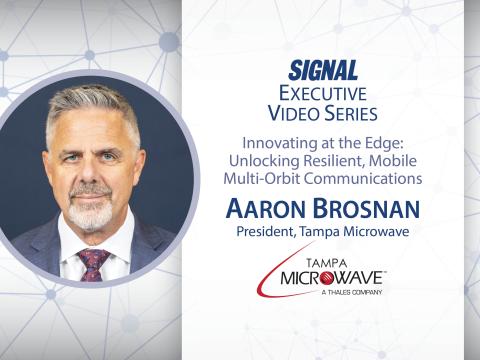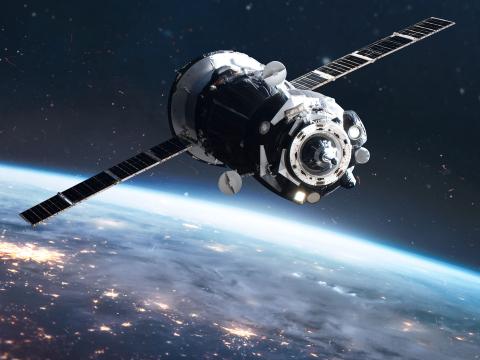Ultrawideband, Free But Not Clear
A potentially groundbreaking capability has strings attached.
After considerable interagency debate, the U.S. government has approved ultrawideband radio technology for commercial use. Ultrawideband devices operate across a wide spectrum range instead of a specific frequency. This allows for more efficient spectrum use at lower power levels and presents a possible solution for bandwidth-starved wireless providers. Other applications include ground-penetrating radar, imaging, surveillance and medical systems. However, issues such as possible interference with navigation and commercial aviation systems must be resolved before the technology gains wider acceptance.
Despite its promise, ultrawideband (UWB) technology evoked great concern in several circles as widespread commercial use approached. The U.S. Defense Department, civil aviation groups and the cellular telephone industry warned that interference with global positioning system (GPS) signals and with communications and navigation systems could be a problem.
In a February report and order, the Federal Communications Commission (FCC) chose to err on the side of safety by taking an extremely conservative approach to implementing the technology. These initial standards were based on suggestions presented by the National Telecommunications and Information Administration (NTIA) and the Defense Department to protect GPS and other vital communications systems. Because no commercial UWB equipment is yet available, the FCC chose to set strict parameters for the technology’s use. According to the FCC, these rules will be reviewed within six to 12 months to determine if they should be relaxed and to address additional types of UWB operations and technology.
The process leading to the FCC ruling was not harmonious, with requests for additional data and comments delaying the effort. “This was decided on an emotional, not a technical, level,” an FCC official speaking on condition of anonymity explains. To present a worst-case scenario for interference with aircraft systems, testers added high noise levels, increasing noise margins up to 40 decibels. “And it’s still under the condition that the airplane is only 70 feet off the ground and there are 10 transmitters pointed directly at it at the moment,” the official says.
Despite differences of opinion, government organizations reached a general agreement for ruling. According to Deputy Assistant Secretary of Commerce for Communications and Information and NTIA Deputy Administrator Michael Gallagher, his agency worked closely with the FCC and the Defense Department to define the operational characteristics for commercial UWB technologies. “Today we have a set of conservative levels because that is the right thing to do, given how critical the government systems are in these spaces. The facts and the truth will define UWB emissions as we go forward. Additional testing may result in more liberal power emissions being allowed. But that’s only after a very high threshold is met in the form of proof that those [emissions] will be safe for Americans who rely on these systems every day,” he offers.
The ruling restricts UWB communications to internal wireless networking systems or handheld devices. Towers, antennas and other outdoor structures are prohibited under the rule. However, the commission drew its conclusions from a worst-case scenario, the FCC official concedes. He notes that once products begin entering the market in large numbers, the restrictions may be relaxed. Despite the stringent measures, the goal was to provide flexibility for companies to bring their products to market. “We did not do anything that’s going to cause any problems for anybody out there,” the official adds.
The February FCC rules allow the operation of ground-penetrating radar and other UWB imaging devices subject to certain frequency and power limitations. Operators of these devices must also be licensed under FCC guidelines. Radar and related systems such as wall imaging and medical systems must operate in the 3.1- to 10.6-gigahertz band. UWB systems capable of imaging through walls or other barriers are designated to operate in the 1.99- to 10.6-gigahertz band. Surveillance systems that create stationary radio frequency perimeters to detect intruders are permitted in the 1.99- to 10.6-gigahertz range. Vehicular radar systems designed to detect the location and movement of objects near a car or truck can operate in the 24-gigahertz range using directional antennas.
Communications and measuring systems are required to operate in the 3.1- to 10.6-gigahertz range, but wireless applications are extremely limited. By restricting operations above 3.1 gigahertz and prohibiting construction of outdoor structures such as towers and antennas, the FCC order reduces the effective range of UWB devices to roughly 30 feet. While indoor applications such as home wireless networking are allowed, the only approved outdoor uses are peer-to-peer handheld devices.
According to William Belt, director of the Telecommunication Industry Association’s (TIA) Wireless Communications Division, Arlington, Virginia, there is a difference of opinion between UWB device manufacturers and service providers and other equipment makers who fear the potential interference problems. Although the TIA takes no position on the issue, Belt notes that if UWB works as promised, it has great potential. “It would fill in a lot of gaps in the spectrum right now that function either as guard bands or are temporarily unused. The promise is to use the existing spectrum more efficiently,” he says.
The Federal Aviation Administration (FAA) and commercial airline groups are still concerned about interference issues. According to FAA officials, the agency is conducting tests to study the impact of UWB emissions on airline instrument and microwave landing systems and air traffic control systems. Testbed systems will be established in New York City, Chicago and Los Angeles.
This difference of opinion about UWB has caused some friction between agencies. The FCC official notes that when US Radar, a commercial developer of ground-penetrating radar, was asked to examine a house in Chicago during a police investigation, it had to follow FAA rules because of close proximity to an airport. The company used its radar technology to survey the basement for bodies that may have been buried under the concrete. “Now this [radar device] is operating at the same emission level that a class-b personal computer is allowed to put out. It’s five miles from the airport. In order for them to do this work in the basement, they required an FAA representative there, in telephone contact with the airport the entire time,” the FCC official explains.
However, the Defense Department is satisfied with the ruling, says Lt. Col. Kenneth McClellan, USAF, a public affairs officer attached to the Office of the Assistant Secretary of Defense, Arlington, Virginia. He notes that the military was concerned by the possibility of large numbers of commercial UWB users raising the noise floor of the environment in which systems such as GPS operate. Requirements for high pass filters and operations above 4 gigahertz, -34 on the GPS band, were key Defense Department concerns that were included in the FCC order.
Although there is general agreement about how to use UWB, the colonel notes that differences existed up to the day the FCC ruled on the issue. “You could drive a truck between some of our positions,” he says. “For example, an airline association came online saying that UWB was going to harm airline safety by messing with GPS. But we’re the guys who own GPS, and we said we can live with it.”
Estimating the size of the UWB market is difficult because no products have yet reached consumers. According to Stanley Bruederle, chief analyst at Gartner Dataquest, San José, California, the technology’s wall-penetrating characteristics make it ideal for home networking applications. However, because the rule currently restricts UWB systems’ bandwidth and power levels to roughly a 30-foot range, it will have difficulty competing with wireless local area networks.
Because the technology is so new, many commercial applications have yet to be determined, Bruederle explains. One potential use for UWB is providing additional bandwidth for a new generation of devices. He notes that this may be a good vehicle for routing high definition television and other types of content around a home or office. Because of the current range limitations, this may even be accomplished in conjunction with some type of power-line networking (SIGNAL, September 2001, page 43) as a backbone. This would allow nodes to be installed in wall sockets to create a mesh network within a building, he speculates.
Yet despite its promise, Bruederle advises caution based on his years of working with new technologies. “Early forecasts tend to be too optimistic. But over time, a technology often ends up being bigger than anyone could have imagined, using applications that nobody even thought of. So at least the FCC is allowing this to move along so we can go through the process,” he says.
Officials of commercial firms such as Time Domain Corporation, Huntsville, Alabama, are pleased with the ruling because they can now concentrate on getting products to market. “We’re very happy with the ruling,” explains Jeffrey Ross, Time Domain’s vice president of corporate development and strategy. “We went from being illegal to legal. I think it’s fair to say, as all the commissioners noted in the decision, that it is a conservative first step. We expect that the FCC will continue to move ahead and grant more flexible rules,” he says.
Time Domain manufactures UWB chip sets and development sets for use in communications and wireless networking devices. The company’s previous customers have been U.S. military services (SIGNAL, February 2001, page 71) and organizations familiarizing themselves with the technology. The firm is still several months away from having a commercial chip set ready, but it will target manufacturers of personal and local area networking equipment and indoor tracking systems as potential clients.
Ross is not sure how quickly markets will develop for UWB technology. “It’s possible you will see some products as early as the end of this year. But I think 2003 is where we’ll see more mass market products introduced,” he speculates.
Additional information on ultrawideband technology and related issues is available on the World Wide Web at www.fcc.gov, www.ntia.doc.gov, www.timedomain.com, and www.usradar.com.
A Not-So-New New Technology Ultrawideband radio has existed in a variety of forms since World War II. Initially developed in England to detect unexploded bombs during the Blitz, it remained relatively unused until the Falklands War in the early 1980s. At that time, British forces encountered modern Argentine land mines that were made primarily of plastic and were difficult to detect with traditional magnetic mine clearance equipment. Ground-penetrating radar operating on ultrawideband frequencies was developed based on the earlier technology to locate the buried explosives. The technology drew the attention of the U.S. Defense Department, which developed it for ground- and foliage-penetrating radar systems, communications and networking systems, beginning in the 1970s. Radio systems using ultrawideband (UWB) operate by transmitting a series of extremely short duration pulses. Unlike traditional radios that operate on a narrow band, UWB spreads these pulses across a wide range of frequencies. Because the pulses are only a nanosecond long, UWB supporters contend that the technology does not interfere with other communications systems at most of the primary commercial operating frequencies. The technology is inherently secure due to the coherent nature of radio pulses because another similar device is required to intercept the signals. UWB devices also use less power than traditional radios. This energy control can be adjusted in real time to suit range requirements. Because transmissions are in the form of pulses rather than on a narrow bandwidth, UWB receivers can locate a signal in areas such as dense vegetation, rubble or urban canyons more easily than can traditional systems. Its ability to penetrate walls and other structures has led to the development of radar-based devices for law enforcement and construction to examine structures and to detect individuals on the other side of walls or doors. UWB’s ability to function in cluttered environments where conventional signals are quickly lost has led to the development of prototype radio and tracking systems for use by emergency workers in burning or damaged buildings. The technology also is being applied to link home appliances and computers to wireless networks. |




Comments